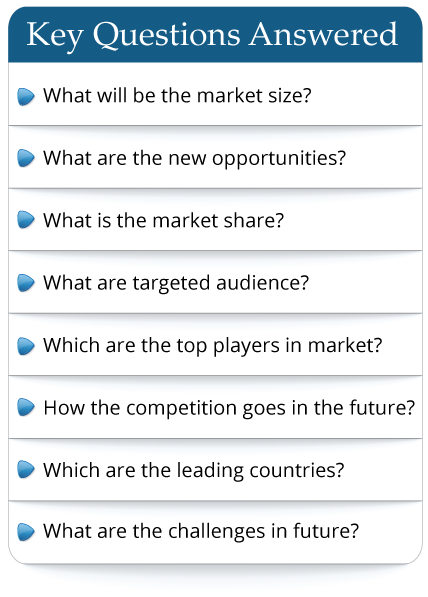Global Infrared Filters Market Insights, Forecast to 2025
IR filter commonly refer to filters that reflect or block mid-infrared wavelengths while passing visible light. The infrared filter exists in various specifications and forms for a multitude of applications. Infrared filters can be designed in bandpass, longpass, and shortpass configurations for applications in the SWIR, NIR, and MIR wavelength bands. Low stress coatings with high blocking in the visible are afforded by incorporating high index semiconductors in the designs.
The market is driven by various end-user industries, such as mobile phone, tablet, notebook, PC, game console, video surveillance, car camera, etc. As the downstream consumption usually follows with developed and rapid economic growth areas, such as BRICS, the developed areas’ company prefers investing to underdevelopment regions these years.
There are different types of Infrared Filters, like Infrared cut-off Filters, Blue Filter, Bandpass Filter and so on. IRCF(infra-red cut filter)is used at the front of the CMOS or CCD. IRCF is designed to cut off infra-red wavelengths while passing visible light which make the sensor sensitivity like human eyes. Blue Filter is growing fast owing to the rapid growth of dual cameras and high pixel phone.
The industry is relatively concentration, the key brand include Zhejiang Quartz Crystal Optoelectronic, Optrontec, W-olf Photoelectric, Shenzhen O-film Tech Co, Tanaka Engineering Inc, Unionlight, Viavi Solutions, Jingbang Optoelectronics Technology, etc. Among them, Zhejiang Quartz Crystal Optoelectronic, Optrontec and W-olf Photoelectric are the leaders occupying about 62% revenue share in 2016.
The leading companies own the advantages on better performance, more abundant product’s types, better technical and impeccable after-sales service. Consequently, they take the majority of the market share of high-end market. Looking to the future years, the slow downward price trend in recent years will maintain. As competition intensifies, prices gap between different brands will go narrowing. Similarly, there will be fluctuation in gross margin.
The industry is expected to remain innovation-led, with frequent acquisitions and strategic alliances adopted as the key strategies by the players to increase their industry presence. Market stays in mature period with a clear concentration. Meanwhile, optimize product mix and further develop value-added capabilities to maximize margins. Manufacturers can take advantage of this situation by reinforcing their production units and supply-chains to avoid any delay in production turn-around-times (TAT) and supply-lead-times.
Significant and lasting barriers make entry into this market difficult. These barriers include, but are not limited to: (i) product development costs; (ii) capital requirements; (iii) intellectual property rights; (iv) regulatory requirement; and (v) Transitions’ unfair methods of competition.
Despite the presence of competition problems, due to the dual camera smartphone trend is clear, investors are still optimistic about this area, the future will still have more new investment enter the field. Even so, the market is intensely competitive .The study group recommends the new entrants just having money but without technical advantage and upstream and downstream support do not to enter into this field.
The Infrared Filters market was valued at 580 Million US$ in 2018 and is projected to reach 1870 Million US$ by 2025, at a CAGR of 15.8% during the forecast period. In this study, 2018 has been considered as the base year and 2019 to 2025 as the forecast period to estimate the market size for Infrared Filters.
This report presents the worldwide Infrared Filters market size (value, production and consumption), splits the breakdown (data status 2014-2019 and forecast to 2025), by manufacturers, region, type and application.
This study also analyzes the market status, market share, growth rate, future trends, market drivers, opportunities and challenges, risks and entry barriers, sales channels, distributors and Porter's Five Forces Analysis.
The following manufacturers are covered in this report:
Zhejiang Quartz Crystal Optoelectronic
Optrontec
W-olf Photoelectric
Shenzhen O-film Tech Co
Tanaka Engineering Inc
Unionlight
Viavi Solutions
Jingbang Optoelectronics Technology
Infrared Filters Breakdown Data by Type
Glass Type
Film Type
Infrared Filters Breakdown Data by Application
Mobile Phone
Tablet
Notebook
PC
Game Console
Others
Infrared Filters Production by Region
United States
Europe
China
Japan
South Korea
Other Regions
Infrared Filters Consumption by Region
North America
United States
Canada
Mexico
Asia-Pacific
China
India
Japan
South Korea
Australia
Indonesia
Malaysia
Philippines
Thailand
Vietnam
Europe
Germany
France
UK
Italy
Russia
Rest of Europe
Central & South America
Brazil
Rest of South America
Middle East & Africa
GCC Countries
Turkey
Egypt
South Africa
Rest of Middle East & Africa
The study objectives are:
To analyze and research the global Infrared Filters status and future forecast,involving, production, revenue, consumption, historical and forecast.
To present the key Infrared Filters manufacturers, production, revenue, market share, and recent development.
To split the breakdown data by regions, type, manufacturers and applications.
To analyze the global and key regions market potential and advantage, opportunity and challenge, restraints and risks.
To identify significant trends, drivers, influence factors in global and regions.
To analyze competitive developments such as expansions, agreements, new product launches, and acquisitions in the market.
In this study, the years considered to estimate the market size of Infrared Filters :
History Year: 2014 - 2018
Base Year: 2018
Estimated Year: 2019
Forecast Year: 2019 - 2025
This report includes the estimation of market size for value (million USD) and volume (KK Pcs ). Both top-down and bottom-up approaches have been used to estimate and validate the market size of Infrared Filters market, to estimate the size of various other dependent submarkets in the overall market. Key players in the market have been identified through secondary research, and their market shares have been determined through primary and secondary research. All percentage shares, splits, and breakdowns have been determined using secondary sources and verified primary sources.
For the data information by region, company, type and application, 2018 is considered as the base year. Whenever data information was unavailable for the base year, the prior year has been considered.
The market is driven by various end-user industries, such as mobile phone, tablet, notebook, PC, game console, video surveillance, car camera, etc. As the downstream consumption usually follows with developed and rapid economic growth areas, such as BRICS, the developed areas’ company prefers investing to underdevelopment regions these years.
There are different types of Infrared Filters, like Infrared cut-off Filters, Blue Filter, Bandpass Filter and so on. IRCF(infra-red cut filter)is used at the front of the CMOS or CCD. IRCF is designed to cut off infra-red wavelengths while passing visible light which make the sensor sensitivity like human eyes. Blue Filter is growing fast owing to the rapid growth of dual cameras and high pixel phone.
The industry is relatively concentration, the key brand include Zhejiang Quartz Crystal Optoelectronic, Optrontec, W-olf Photoelectric, Shenzhen O-film Tech Co, Tanaka Engineering Inc, Unionlight, Viavi Solutions, Jingbang Optoelectronics Technology, etc. Among them, Zhejiang Quartz Crystal Optoelectronic, Optrontec and W-olf Photoelectric are the leaders occupying about 62% revenue share in 2016.
The leading companies own the advantages on better performance, more abundant product’s types, better technical and impeccable after-sales service. Consequently, they take the majority of the market share of high-end market. Looking to the future years, the slow downward price trend in recent years will maintain. As competition intensifies, prices gap between different brands will go narrowing. Similarly, there will be fluctuation in gross margin.
The industry is expected to remain innovation-led, with frequent acquisitions and strategic alliances adopted as the key strategies by the players to increase their industry presence. Market stays in mature period with a clear concentration. Meanwhile, optimize product mix and further develop value-added capabilities to maximize margins. Manufacturers can take advantage of this situation by reinforcing their production units and supply-chains to avoid any delay in production turn-around-times (TAT) and supply-lead-times.
Significant and lasting barriers make entry into this market difficult. These barriers include, but are not limited to: (i) product development costs; (ii) capital requirements; (iii) intellectual property rights; (iv) regulatory requirement; and (v) Transitions’ unfair methods of competition.
Despite the presence of competition problems, due to the dual camera smartphone trend is clear, investors are still optimistic about this area, the future will still have more new investment enter the field. Even so, the market is intensely competitive .The study group recommends the new entrants just having money but without technical advantage and upstream and downstream support do not to enter into this field.
The Infrared Filters market was valued at 580 Million US$ in 2018 and is projected to reach 1870 Million US$ by 2025, at a CAGR of 15.8% during the forecast period. In this study, 2018 has been considered as the base year and 2019 to 2025 as the forecast period to estimate the market size for Infrared Filters.
This report presents the worldwide Infrared Filters market size (value, production and consumption), splits the breakdown (data status 2014-2019 and forecast to 2025), by manufacturers, region, type and application.
This study also analyzes the market status, market share, growth rate, future trends, market drivers, opportunities and challenges, risks and entry barriers, sales channels, distributors and Porter's Five Forces Analysis.
The following manufacturers are covered in this report:
Zhejiang Quartz Crystal Optoelectronic
Optrontec
W-olf Photoelectric
Shenzhen O-film Tech Co
Tanaka Engineering Inc
Unionlight
Viavi Solutions
Jingbang Optoelectronics Technology
Infrared Filters Breakdown Data by Type
Glass Type
Film Type
Infrared Filters Breakdown Data by Application
Mobile Phone
Tablet
Notebook
PC
Game Console
Others
Infrared Filters Production by Region
United States
Europe
China
Japan
South Korea
Other Regions
Infrared Filters Consumption by Region
North America
United States
Canada
Mexico
Asia-Pacific
China
India
Japan
South Korea
Australia
Indonesia
Malaysia
Philippines
Thailand
Vietnam
Europe
Germany
France
UK
Italy
Russia
Rest of Europe
Central & South America
Brazil
Rest of South America
Middle East & Africa
GCC Countries
Turkey
Egypt
South Africa
Rest of Middle East & Africa
The study objectives are:
To analyze and research the global Infrared Filters status and future forecast,involving, production, revenue, consumption, historical and forecast.
To present the key Infrared Filters manufacturers, production, revenue, market share, and recent development.
To split the breakdown data by regions, type, manufacturers and applications.
To analyze the global and key regions market potential and advantage, opportunity and challenge, restraints and risks.
To identify significant trends, drivers, influence factors in global and regions.
To analyze competitive developments such as expansions, agreements, new product launches, and acquisitions in the market.
In this study, the years considered to estimate the market size of Infrared Filters :
History Year: 2014 - 2018
Base Year: 2018
Estimated Year: 2019
Forecast Year: 2019 - 2025
This report includes the estimation of market size for value (million USD) and volume (KK Pcs ). Both top-down and bottom-up approaches have been used to estimate and validate the market size of Infrared Filters market, to estimate the size of various other dependent submarkets in the overall market. Key players in the market have been identified through secondary research, and their market shares have been determined through primary and secondary research. All percentage shares, splits, and breakdowns have been determined using secondary sources and verified primary sources.
For the data information by region, company, type and application, 2018 is considered as the base year. Whenever data information was unavailable for the base year, the prior year has been considered.
Frequently Asked Questions
This market study covers the global and regional market with an in-depth analysis of the overall growth prospects in the market. Furthermore, it sheds light on the comprehensive competitive landscape of the global market. The report further offers a dashboard overview of leading companies encompassing their successful marketing strategies, market contribution, recent developments in both historic and present contexts.
- By product type
- By End User/Applications
- By Technology
- By Region
The report provides a detailed evaluation of the market by highlighting information on different aspects which include drivers, restraints, opportunities, and threats. This information can help stakeholders to make appropriate decisions before investing.
Please Select a Format












